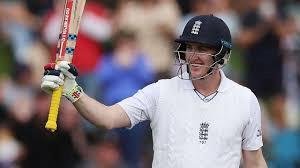In the annals of cricket, reaching 1000 Runs in Tests is considered a significant milestone for a batter. The journey to this figure is not merely about accumulating runs, but it is also a testament to the player’s consistency, adaptability, and temperament across various conditions. Some players take time to reach this mark, gradually finding their footing in the longest format of the game, while others, through sheer talent and audacity, get there in record time.
Scoring 1,000 runs in Test cricket is a marker of proficiency, but doing it rapidly, across just a few matches, is an indication of supreme skill and dominance. Only a select few have crossed this threshold at blistering speeds, combining aggression with consistency in a format that tests patience and concentration. Let’s delve into the fastest batters to achieve this remarkable feat.
1. Sir Donald Bradman – 7 Innings
No discussion of cricketing greatness is complete without mentioning the legendary Australian cricketer Sir Donald Bradman. Bradman, widely regarded as the greatest batter in the history of the sport, holds the record for being the fastest to 1000 Runs in Tests, achieving this feat in just 7 innings. His journey began in the 1928 Ashes series, and he quickly made a name for himself with his impeccable technique and hunger for runs. Bradman’s ability to accumulate runs at a fast rate, while maintaining an average that remains unmatched, set a new standard for batters in Test cricket.
What made Bradman’s record all the more remarkable was the context in which he played. The pitches were more bowler-friendly, the protective gear was minimal, and yet Bradman thrived, making light work of the world’s best bowlers. His 1,000 runs came in an era where scoring was much harder, cementing his legacy as a once-in-a-generation talent.
2. Everton Weekes – 12 Innings
West Indian legend Everton Weekes, a member of the famous ‘Three Ws’ alongside Clyde Walcott and Frank Worrell, was another player who reached 1000 Runs in Tests. Weekes achieved this milestone in just 12 innings, making him the second fastest in history. His run-scoring ability was a combination of elegant stroke play and sheer resilience.
Weekes’ 1,000 runs came during the late 1940s, and his impact was immense, especially considering the socio-political context of West Indian cricket during that period. His performances not only helped his team but also gave hope to a cricketing community that was striving for global recognition. Weekes went on to score over 4,000 runs in his Test career, but it was his early flurry of runs that made the world sit up and take notice.
3. Herbert Sutcliffe – 12 Innings
Another cricketing great, England’s Herbert Sutcliffe, shares the second spot with Weekes, also reaching the 1000 Runs in Tests in 12 innings. Sutcliffe, known for his rock-solid technique and unwavering concentration, was a pillar of England’s batting lineup during the 1920s and 1930s. He formed a formidable opening partnership with Jack Hobbs, and together, they laid the foundation for many of England’s Test victories.
Sutcliffe’s ability to adapt to various conditions and dominate bowlers across continents made him a consistent performer. He was especially adept at playing in challenging conditions, with a remarkable knack for scoring runs in difficult situations. His rapid rise to 1,000 Test runs exemplifies his class as a top-order batter who could blend aggression with caution when needed.
4. Vinod Kambli – 14 Innings
India’s Vinod Kambli made a sensational entry into Test cricket in the early 1990s. Known for his attacking style and ability to take on any bowler, Kambli reached the 1,000-run mark in just 14 innings, becoming one of the fastest to achieve this milestone. His early Test career was filled with remarkable performances, including back-to-back double centuries, which catapulted him into the cricketing limelight.
Kambli’s career, however, did not reach the heights it promised in the initial phase. While his early performances were extraordinary, inconsistency and off-field issues led to a premature end to his Test career. Despite this, his rapid journey to 1,000 runs remains a significant achievement, showcasing the immense talent he possessed.
5. Neil Harvey – 14 Innings
Australian batting sensation Neil Harvey, one of the finest left-handers to have played the game, also reached 1,000 Test runs in 14 innings. Harvey was an integral part of Australia’s powerful batting lineup in the 1950s, known for his aggressive stroke play and graceful technique. His quick rise to 1,000 runs reflected his ability to dominate bowlers and dictate terms at the crease.
Harvey played a pivotal role in many of Australia’s successes, and his ability to score runs quickly while maintaining an impressive average made him a feared batter. His entry into the elite club of fastest 1,000-run scorers is a testament to his batting prowess and consistency during a golden era for Australian cricket.
6. George Headley – 15 Innings
Often referred to as the ‘Black Bradman,’ West Indies’ George Headley was one of the finest batters of his era. He reached the 1,000-run milestone in 15 innings, a remarkable achievement that highlighted his dominance in the 1930s and 1940s. Headley’s ability to score runs under pressure, often single-handedly shouldering the burden of his team’s batting, made him a revered figure in cricketing circles.
Headley’s contributions were not just about individual brilliance but also about the hope he brought to Caribbean cricket. His ability to score quickly and consistently across different conditions made him one of the most feared batters of his time.
7. Frank Worrell – 15 Innings
Frank Worrell, one of the greatest leaders in cricket history and a member of the famed ‘Three Ws’ along with Weekes and Walcott, also made it to 1000 Runs in Tests in 15 innings. Worrell was known not only for his batting but also for his leadership and ability to unite the West Indian team, laying the foundation for their dominance in world cricket during the 1960s and 1970s.
His batting style was elegant, and he was known for playing according to the situation, making him a versatile batter. Worrell’s ability to score runs quickly, combined with his leadership qualities, made him a revered figure in the cricketing world.
Conclusion
Reaching 1,000 runs in Test cricket is a prestigious milestone, but doing it at lightning speed is a reflection of a batter’s immense talent and ability to adapt quickly to the rigors of the longest format. Players like Bradman, Weekes, and Sutcliffe set benchmarks that have become legendary in the cricketing world. Each of these batters brought their unique style and flair to the game, leaving a lasting legacy that continues to inspire generations of cricketers.
While modern-day cricketers face different challenges, including more frequent international schedules and the demands of limited-overs cricket, the rapid accumulation of 1000 Runs in Tests remains a prestigious achievement, symbolizing mastery over the red ball. As the game continues to evolve, we may yet see more players joining this elite group, but the legends of the past will forever be remembered for setting the gold standard in Test cricket.



